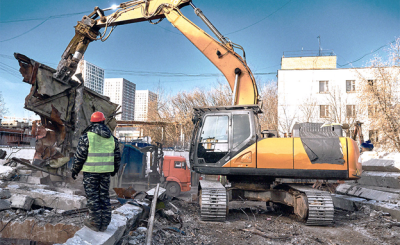What Is Asbestos and Why Is It Dangerous?
Asbestos is a naturally occurring mineral that was widely used in construction materials due to its heat resistance and durability. However, asbestos becomes hazardous when its fibers are disturbed and released into the air, as they can be inhaled and lodge in the lungs. This exposure can lead to serious health problems, including asbestosis, lung cancer, and mesothelioma. Landlords or property owners must manage any asbestos materials found in rental properties to ensure tenant safety. Learn more about landlord responsibilities.
Common Areas Where Asbestos Is Found in Homes
In older rental properties, asbestos can often be found in:
- Insulation around pipes and boilers
- Ceiling tiles and textured coatings
- Flooring materials, such as vinyl tiles
- Roofing shingles and siding
It’s important to note that asbestos-containing materials are not always dangerous if left undisturbed. However, landlords should still assess their condition to avoid potential risks.
Health Risks Associated With Asbestos Exposure
Exposure to asbestos fibers can have serious long-term health effects. Some of the primary risks include:
- Asbestosis: A chronic lung disease caused by inhaling asbestos fibers, leading to scarring of lung tissue.
- Mesothelioma: A rare but aggressive cancer that affects the lining of the lungs, abdomen, or heart.
- Lung Cancer: Prolonged exposure to asbestos increases the risk of developing lung cancer, especially for smokers.
Given these risks, landlords should take proactive steps to identify and manage asbestos in their properties. Conducting regular inspections or hiring professionals for thorough assessments can help mitigate these dangers. Explore ways to identify asbestos effectively in rental buildings.
Legal Obligations for Landlords Regarding Asbestos
Federal Regulations on Asbestos Management
Federal laws set the foundation for how landlords must handle asbestos. The Environmental Protection Agency (EPA) has outlined strict guidelines for identifying, managing, and removing asbestos in properties. These rules apply to both residential and commercial buildings, ensuring that tenants are not exposed to harmful asbestos fibers. Landlords are required to follow these federal standards to minimize health risks. Non-compliance can lead to significant penalties, including fines and legal action.
State-Specific Laws for Landlords
While federal laws provide a baseline, many states have their own specific regulations regarding asbestos. These laws can vary widely, from requiring regular inspections to mandating the use of certified professionals for asbestos removal. Landlords should familiarize themselves with their state’s particular requirements to avoid legal complications. Failure to adhere to state-specific laws could result in even stricter penalties than those imposed at the federal level.
Penalties for Non-Compliance With Asbestos Laws
Ignoring asbestos regulations is not just a legal risk—it’s a financial one, too. Landlords who fail to comply may face:
- Hefty fines that can range from thousands to millions of dollars, depending on the severity of the violation.
- Lawsuits filed by tenants who suffer health issues due to asbestos exposure.
- Possible criminal charges for extreme cases of negligence.
By conducting regular asbestos surveys and maintaining updated records, landlords can protect both their tenants and themselves from these severe consequences.
Identifying Asbestos in Rental Homes
Signs That a Property May Contain Asbestos
Many homes built before the 1980s are likely to contain asbestos in some form. Knowing the age of the property is a good starting point. Asbestos was commonly used in construction materials like ceiling tiles, floor tiles, insulation, and roofing. If a property has older materials that appear worn or damaged, it could potentially release asbestos fibers into the air. Landlords should be cautious of:
- Crumbling drywall or plaster.
- Peeling paint in older homes.
- Worn-out flooring or ceiling tiles.
These signs don’t confirm the presence of asbestos, but they do warrant further investigation.
Hiring Certified Asbestos Inspectors
If there’s any suspicion of asbestos, landlords should hire a certified asbestos inspector. These professionals are trained to identify asbestos-containing materials (ACMs) without causing unnecessary disturbance. An inspector will:
- Conduct a visual assessment of the property.
- Collect samples for laboratory testing.
- Provide a detailed report on the findings.
Hiring an expert ensures compliance with legal obligations and protects both landlords and tenants from potential health risks. Landlords’ legal responsibilities often require proper documentation of these inspections.
Using Laboratory Testing for Asbestos Confirmation
Laboratory testing is the only way to confirm whether a material contains asbestos. Samples collected by an inspector are sent to a lab for analysis. The results will specify the type and concentration of asbestos, if present. This information is critical for planning the next steps, whether it’s containment or removal. For more on identifying potential asbestos hazards, refer to asbestos dangers and identification.
Asbestos Disclosure Requirements for Landlords
When and How to Inform Tenants About Asbestos
Landlords have a responsibility to inform tenants if asbestos is present or suspected in a rental property. This disclosure is not just a courtesy—it’s a legal obligation. Tenants need to know about potential risks so they can make informed decisions about their living environment. Ideally, landlords should provide this information before a lease is signed or as soon as asbestos is identified during tenancy.
A proper disclosure should include:
- The location(s) of asbestos in the property.
- Whether the asbestos is intact or poses a risk of exposure.
- Any planned actions, such as containment or removal.
It’s also helpful to share general information about asbestos, such as its risks and how to avoid disturbing it. For detailed guidance, landlords can consult the EPA asbestos site, which offers practical resources and advice.
Providing Documentation of Asbestos Inspections
Transparency is key when it comes to asbestos management. Landlords should maintain and share records of all asbestos-related inspections and testing. Certified asbestos inspectors often provide comprehensive reports that detail findings, risk assessments, and recommendations for handling the material. Tenants have the right to request these documents, especially if they have concerns about their safety.
To keep things organized, landlords might consider:
- Keeping all inspection reports in a dedicated file.
- Including summaries of the findings in tenant agreements.
- Providing updates if new inspections are conducted.
Clear documentation not only builds trust with tenants but also helps landlords demonstrate compliance with laws if disputes arise.
Legal Consequences of Failing to Disclose Asbestos
Failing to disclose asbestos-related information can lead to serious legal and financial consequences. Tenants who discover undisclosed asbestos hazards may take legal action, claiming negligence or breach of contract. Courts often side with tenants in such cases, especially when landlords knowingly withheld information.
Penalties for non-disclosure can include:
- Fines or civil penalties imposed by regulatory agencies.
- Lawsuits resulting in compensation for tenant health damages.
- Eviction disputes or forced property repairs.
Additionally, landlords may face scrutiny under NESHAP regulations, which set strict requirements for asbestos management during renovations and demolitions. Compliance is not optional—it’s a critical part of protecting tenant health and avoiding costly repercussions.
Safe Asbestos Removal and Management Practices
When to Consider Professional Asbestos Removal
Removing asbestos isn’t something landlords should take lightly. If asbestos-containing materials are damaged or deteriorating, it’s time to act. Hiring certified professionals is often the safest route, as they have the expertise and equipment to handle hazardous materials properly. Attempting DIY removal can not only put your health at risk but also violate local and federal regulations.
Here are a few situations where professional removal is strongly recommended:
- When asbestos is found in high-traffic areas or near ventilation systems.
- If materials containing asbestos are friable (easily crumbled) and releasing fibers.
- During major renovations or demolition projects involving older buildings.
Steps for Safe Asbestos Containment
Not all asbestos situations require immediate removal. In some cases, containment can be a safer and more cost-effective option. Containment involves sealing or enclosing asbestos materials to prevent fiber release. This might be the best choice if the asbestos is in good condition and unlikely to be disturbed.
Steps to safely contain asbestos include:
- Assess the condition of the asbestos material. Ensure it’s stable and not releasing fibers.
- Use specialized sealants to coat the material, creating a barrier.
- Enclose the area with airtight barriers or covers to limit exposure.
- Regularly inspect the contained area to ensure the seal remains intact.
Costs Associated With Asbestos Abatement
The price of addressing asbestos issues can vary widely, depending on the scope of the work. Professional removal can range from a few hundred to several thousand dollars, depending on factors like the size of the area and the complexity of the job. Containment methods, on the other hand, tend to be less expensive but still require professional expertise to ensure safety.
Landlords should also consider additional costs, such as:
- Hiring certified asbestos inspectors to assess the property.
- Purchasing protective gear and materials for containment or removal.
- Covering temporary housing for tenants if the work disrupts their living environment.
For landlords, understanding these practices isn’t just about compliance—it’s about ensuring the safety of everyone involved. Contractors removing asbestos must prioritize safety by using appropriate personal protective equipment (PPE), such as respirators, gloves, and disposable suits. Following these guidelines can help mitigate risks and maintain tenant trust.
Tenant Rights and Asbestos Concerns
What Tenants Should Know About Asbestos Risks
Tenants have the right to live in a safe environment, free from harmful substances like asbestos. Understanding where asbestos might be found in a property, such as in old insulation, flooring, or roofing materials, is important. If disturbed, asbestos fibers can pose serious health risks, including lung diseases like asbestosis or mesothelioma. Tenants should familiarize themselves with the age and condition of their rental property, especially if it was built before the 1980s when asbestos use was more common.
How Tenants Can Report Asbestos Issues
If tenants suspect asbestos in their rental property, they should take immediate action. The first step is to inform the landlord in writing about the concern. This creates a record of the notification and ensures the issue is formally addressed. Tenants can also include photos or descriptions of the suspected asbestos to support their claim. Tenants must promptly inform landlords in writing about any asbestos presence. If the landlord does not respond or take action, tenants can contact local health or housing authorities to escalate the matter.
Legal Recourse for Tenants in Unsafe Conditions
When landlords fail to address asbestos issues, tenants have several legal options. They can file a complaint with housing authorities, seek legal advice, or even withhold rent in some jurisdictions until the problem is resolved. In extreme cases, tenants may be able to terminate their lease without penalties if the property is deemed uninhabitable. It’s crucial for tenants to document all communications and gather evidence, such as inspection reports or medical records, to support their case if legal action becomes necessary.
Preventative Measures for Landlords
Conducting Regular Property Inspections
Landlords should prioritize routine inspections to identify potential asbestos risks before they escalate. These inspections can help spot early warning signs, such as deteriorating insulation or old flooring materials, which might contain asbestos. Regular checks not only protect tenants but also help landlords avoid costly legal issues. It’s wise to hire professionals familiar with asbestos regulations to ensure nothing is overlooked. A comprehensive listing of laws and regulations related to asbestos, established by the EPA and other federal agencies, is available here.
Using Asbestos-Free Materials in Renovations
When renovating rental properties, landlords should always opt for asbestos-free materials. While older homes often contain asbestos in tiles, roofing, or insulation, modern alternatives are safer and widely available. Investing in these materials not only reduces health risks but also enhances the property’s long-term value. In April 2022, the EPA proposed a ban on ongoing uses of asbestos to safeguard American workers and families, aiming to prohibit the only known form of this hazardous material. Learn more about this proposed ban.
Training Property Managers on Asbestos Awareness
Property managers play a critical role in maintaining rental homes, so they must be trained to recognize and address asbestos-related issues. Basic awareness training can cover identifying suspicious materials, understanding legal obligations, and knowing when to call in certified inspectors. This proactive approach ensures that potential problems are managed promptly, keeping tenants safe and landlords compliant with the law.
Insurance and Financial Considerations for Asbestos Issues
Does Landlord Insurance Cover Asbestos Claims?
Understanding whether landlord insurance covers asbestos issues is critical for property owners. Most standard policies do not automatically include coverage for asbestos-related claims, as asbestos is often considered a pre-existing condition. However, some insurers offer specialized policies or riders that address asbestos liability. Landlords should carefully review their policies to identify any exclusions or limitations. If coverage is unclear, consulting with an insurance expert is a smart step to avoid surprises later. For those navigating legal challenges, asbestos liability can become a significant financial burden without proper coverage.
Budgeting for Asbestos Management Costs
Managing asbestos in rental properties can be expensive, and landlords need to plan accordingly. Costs typically include inspections, laboratory testing, professional removal, and ongoing monitoring. To avoid financial strain, landlords can:
- Allocate funds annually for potential asbestos-related expenses.
- Obtain multiple quotes from certified professionals to ensure fair pricing.
- Explore financing options or grants for asbestos abatement programs.
Proactive budgeting not only helps with compliance but also protects landlords from unexpected financial setbacks.
Tax Deductions for Asbestos-Related Expenses
The costs associated with asbestos management may qualify as tax-deductible expenses for landlords. Expenses like inspections, removal, and repairs can often be claimed as part of property maintenance. However, it’s essential to keep detailed records and consult a tax professional to ensure compliance with IRS guidelines. Proper documentation can also support claims related to asbestos-related insurance policies, should disputes arise. By leveraging these deductions, landlords can offset some of the financial burden tied to asbestos management.
Case Studies of Landlord Asbestos Compliance
Examples of Successful Asbestos Management
Some landlords have managed asbestos issues effectively, setting a benchmark for others in the rental property business. One notable example involved a landlord who discovered asbestos in an older apartment complex. Instead of delaying action, they hired a certified asbestos inspector to assess the property. Following the inspection, they worked with a professional removal team to safely abate the asbestos. This proactive approach not only safeguarded tenant health but also avoided potential legal troubles. Tenants were notified promptly, and documentation of the process was shared openly, fostering trust and transparency.
Lessons Learned From Non-Compliant Landlords
Failing to follow asbestos regulations can lead to serious consequences. In one case, a property developer faced significant penalties for ignoring proper asbestos disposal procedures. Non-compliance with asbestos disposal rules resulted in a £2.5 million fine, highlighting the financial and reputational risks involved. Another instance involved a landlord who failed to inform tenants about known asbestos hazards. This led to a lawsuit, with tenants citing negligence and health concerns. The key takeaway? Ignoring asbestos issues can cost far more than addressing them upfront.
Impact of Compliance on Tenant Satisfaction
Landlords who handle asbestos concerns responsibly often see a positive impact on tenant relationships. Tenants value clear communication and proactive measures when it comes to their safety. In one example, a landlord who followed all asbestos management protocols saw increased tenant retention rates. Tenants appreciated the transparency and felt reassured knowing their health was prioritized. On the flip side, landlords who neglect these responsibilities risk losing tenant trust, which can lead to higher turnover and potential legal challenges.
For landlords, understanding the legal and practical aspects of asbestos compliance is not just about avoiding penalties; it’s about creating a safe and trustworthy environment. Asbestos management is a critical part of maintaining rental properties, and the lessons from these cases underline its importance. For more on the legal landscape surrounding asbestos claims, see this Legal Backgrounder.
Resources for Landlords on Asbestos Management
Government Agencies Offering Asbestos Guidance
Landlords can rely on several government agencies for accurate and updated information about asbestos management. The Environmental Protection Agency (EPA) is a primary resource, offering guidelines on safe handling and removal of asbestos-containing materials. Additionally, the Occupational Safety and Health Administration (OSHA) provides standards for workplace safety, which can be particularly useful for landlords managing multiple properties. State-level health departments also often have specific resources tailored to local regulations, ensuring landlords stay compliant.
Recommended Asbestos Training Programs
For landlords aiming to better understand asbestos risks and management, enrolling in training programs can be a smart move. Many organizations offer certification courses that cover the identification, containment, and removal of asbestos. These programs not only enhance safety but also help landlords avoid legal pitfalls. Look for courses approved by the EPA or your state’s regulatory body to ensure the training meets required standards. Some programs even include practical demonstrations, making it easier to apply the knowledge in real-world scenarios.
Where to Find Certified Asbestos Professionals
Hiring certified professionals is essential when dealing with asbestos to ensure the work is done safely and legally. Start by checking directories maintained by the EPA or state environmental agencies. These lists often include licensed inspectors, contractors, and abatement specialists. Professional certifications should always be verified before hiring, as improper handling of asbestos can lead to serious health and legal consequences. Asking for references or reviews can also provide insight into the quality of their work.
More Resources
Robert King Mesothelioma Law Services








